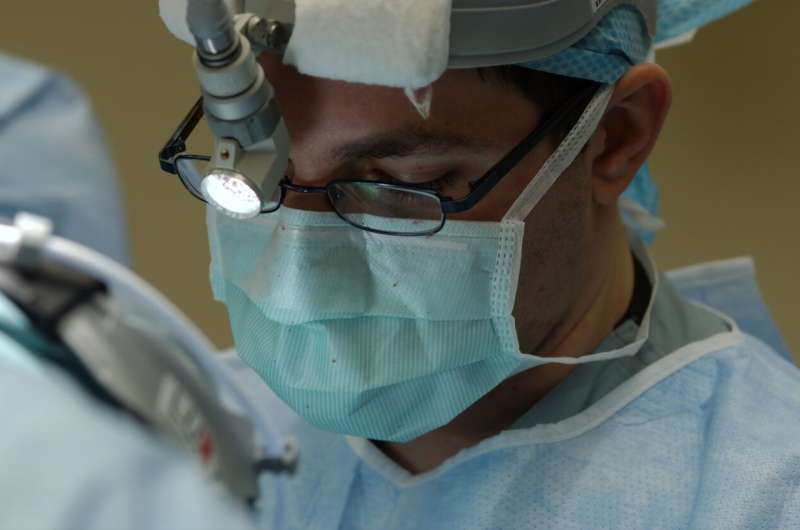This article has been reviewed according to Science X's editorial process and policies. Editors have highlighted the following attributes while ensuring the content's credibility:
fact-checked
peer-reviewed publication
trusted source
proofread
Estimating the environmental impact of prostate cancer procedures

A Yale-led study examines the potential environmental benefits of more carefully selecting patients for prostate biopsy in a way that can also spare low-yield and potentially harmful procedures.
Yale School of Medicine Associate Professor of Urology Michael Leapman, MD, MHS, and co-authors across seven other U.S. institutions estimated the environmental impacts of prostate magnetic resonance imaging [MRI] and prostate biopsy, procedures that are part of the diagnostic process for patients with known or suspected prostate cancer. Overall, they estimate that performing both an MRI and biopsy is similar to going on a "round-trip flight from London to Paris," in terms of energy used, staff travel, and supply production. Their research, using cradle-to-grave life cycle assessment methodology, was published in the January issue of the journal European Urology.
Study investigators say the overarching message is that sustainability efforts should be aligned with patient interests and evidence-based care. "We continue to see many medical and diagnostic procedures being used more often than recommended by clinical guidelines—increasing health care costs and in some cases, directly harming patients," says Leapman.
"A dimension that has been less well studied is the environmental impact of care that is already considered low-value or unnecessary. In this analysis, we estimate the carbon footprint of a prostate biopsy, then extrapolate the potential environmental benefits of adopting various evidence-based approaches," continues Leapman, who specializes in the treatment of patients with prostate and genitourinary cancers and serves as clinical leader of the Prostate & Urologic Cancers Program at Yale Cancer Center and Smilow Cancer Hospital.
Prostate biopsy is commonly performed across the world as the main diagnostic test for prostate cancer. Each year, approximately 1 million prostate biopsies are performed in the U.S. alone, yet more than half of patients who are being evaluated for an elevated prostate-specific antigen [PSA] are found to not have prostate cancer.
It has been well documented the health care industry is a major source of pollution, worldwide. But to date, no tangible figures existed of the environmental impact of the prostate biopsy and/or MRI. Leapman and his co-researchers, therefore, focused on these "overused" early-detection practices.
Study authors not only tried to show the impact of the procedures, but also calculated the potential impacts if different strategies were applied. Based on their measurements, it was estimated that performing 100,000 fewer biopsies would avoid 8.1 million kilograms of carbon dioxide emissions [the equivalent of 1.1 million gallons of gasoline burned]. If prostate MRI were used more in selecting patients who undergo a prostate biopsy—an approach used in other countries and supported by several clinical studies—1.4 million kilograms of carbon dioxide equivalent emissions could be reduced per 100,000 patients [the equivalent of 184,920 gallons of gasoline consumed].
Leapman and his team hope numbers such as this will help patients and physicians be aware of the connection between potential environmental benefits and evidence-based care. "We are already cognizant of the physical, emotional, and economic consequences of over-diagnosing and over-treating prostate cancer," says Leapman.
"We hope this work adds depth to the discussion by providing concrete estimates of health care pollution and environmental impact also incurred through these procedures." Leapman stresses the most important takeaway is that well-studied strategies can both help select patients more carefully for invasive diagnostic procedures and have a positive environmental benefit.
More information: Michael S. Leapman et al, Environmental Impact of Prostate Magnetic Resonance Imaging and Transrectal Ultrasound Guided Prostate Biopsy, European Urology (2023). DOI: 10.1016/j.eururo.2022.12.008


















